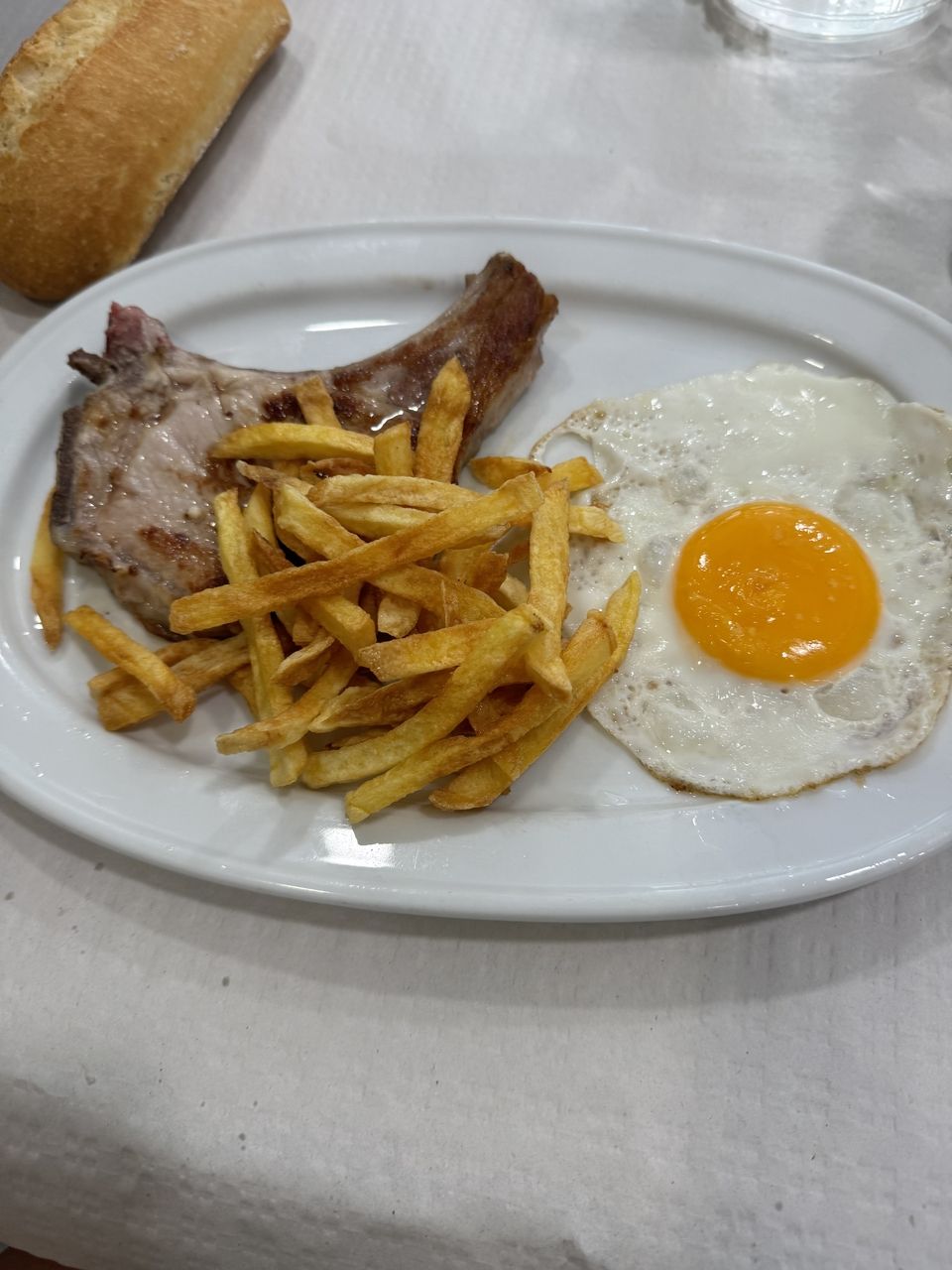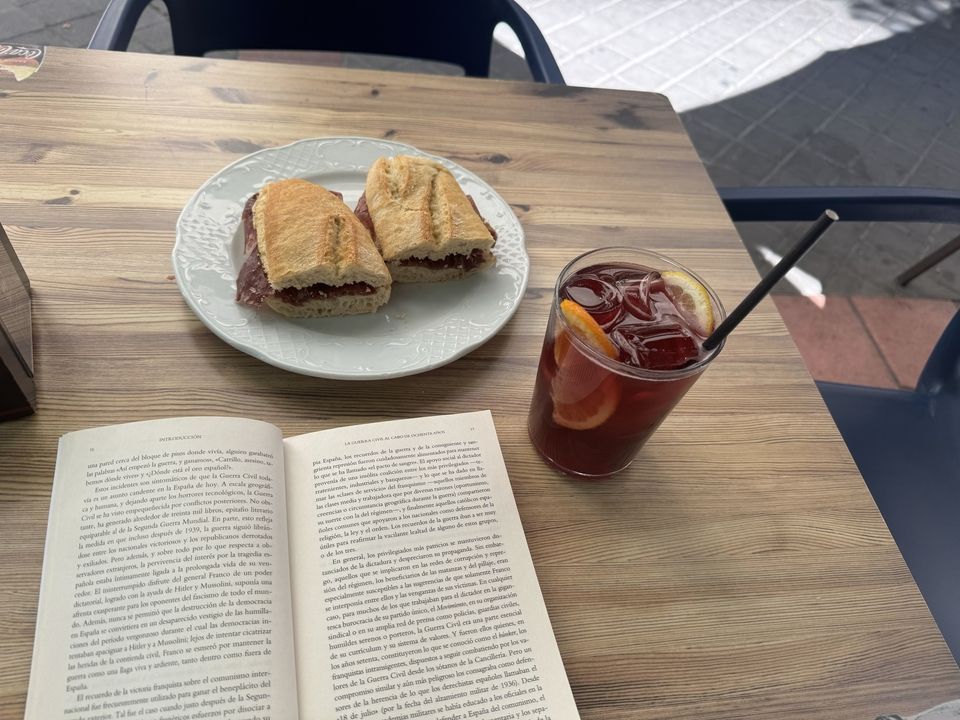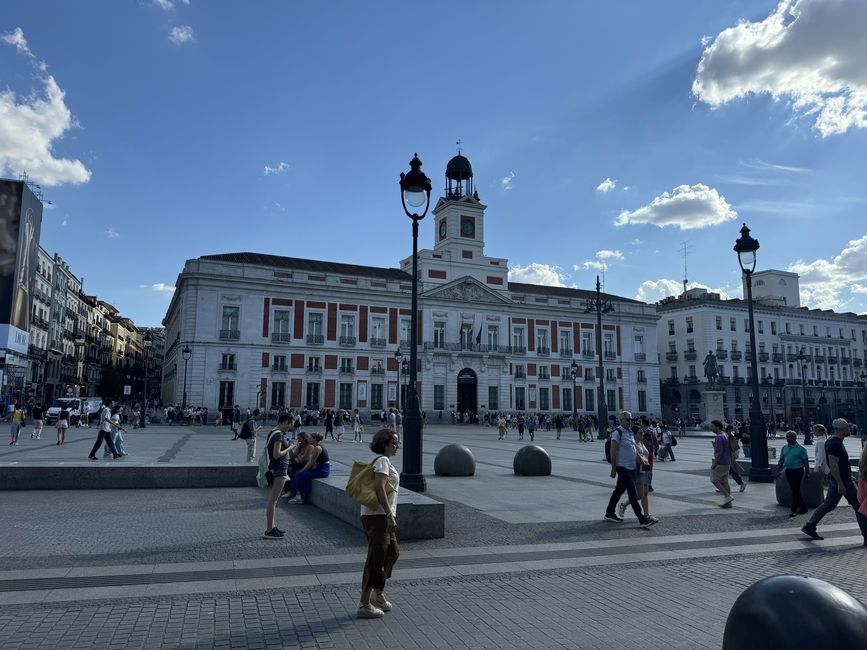Moving to Madrid: My First Day To-Do List
On my first day in Madrid, my flight landed at around 8:30am. I had time to get my luggage and regroup with other CIEE participants I had met at the airport before our flight left. Then, I boarded a shuttle bus our program had arranged for us and arrived at my orientation hotel around 10-10:30am.
I was very tempted to lay down and sleep for the rest of the day, but I decided I needed to try to fight jet lag and stay out of my hotel room for a while. I took about an hour to sit down and plan the rest of my day and then I started working on my to-do list: opening a Spanish bank account, getting my public transport card, and buying a new eSIM for my phone.
These tasks were all things I needed to do at some point to transition to life in Spain, but completing them on my first day really eased my mind and allowed me to enjoy my program orientation without being stressed about all the other things I needed to do. Completing these tasks also made it much easier to focus my full attention on finding housing the rest of the week.
One thing I should probably note: I speak enough Spanish to have completed most of these tasks while conversing with people in Spanish. So far, I have found that many people in Madrid are very welcoming and encouraging when you try to practice speaking Spanish. However, this skill is not 100% necessary as you can find some people who speak English in a large city like Madrid, but also don't automatically expect everyone you come in contact with to speak perfect English. Just as you would want someone to be patient with you if you were trying to speak a non-native language, be patient with the people trying to help you.
Hopefully, my experience and tips from my first day can help you successfully transition to living in Madrid.

1. I opened a Spanish bank account.
I needed to open a bank account in Spain anyway to receive my monthly stipend for being an auxiliar de conversación, but I also wanted to complete this step before starting my housing hunt in case any landlords asked for it. I opened my bank account with Santander because CIEE recommended a contact at one of the Santander branches who was able to start the process of opening my account while I was still in the U.S. I emailed her an application and a scan of my passport photo page a couple weeks before arriving in Spain. Then, on my first day in Madrid I went to the Santander branch, took a number and waited until it was my turn, and met with a representative to open my account.
This brings me to a piece of general advice for any official appointments or things you need to set up: bring your physical passport, not a copy. You can always check ahead of time what documents you need to bring with you, but in my experience so far, basically anything that requires official paperwork will also require you to bring the original copy of your passport or other identification document. I gave the Santander representative my passport, and she did the rest. She also helped me set up my mobile banking app and showed me how to deposit cash into my account.
I know other people from my orientation who did not contact a bank before leaving the U.S., but they were still able to go to Santander or other banks and set up an account with no appointment and just their passport.
2. I went to an appointment for my Abono Transporte – the public transportation card that allows you to travel anywhere within the Community of Madrid.
Luckily, I qualify for Madrid's Abono Joven, which allows anyone under the age of 26 to get their public transport card at a discounted rate. You have to make an in-person appointment to get your card. I actually made my appointment on the same day I arrived in Madrid because I didn't know you can schedule your appointment before arriving. My appointment was at the Consorcio Regional de Transportes de Madrid.
I had to take a number and wait until it was my turn. I actually waited about an hour past my original appointment time to be seen because there were only two windows open at a time, so you may want to go a bit earlier and see what the line at your appointment location is like. Again, bring your physical passport with you. All I had to do was hand the agent my passport and take a photo for my transport card. I paid €4 for the physical card at my appointment. Then, I paid the monthly fee at a kiosk in one of the metro stations.
If your appointment for your transport card is not on your first day in Madrid, you can get a Tarjeta Multi at a kiosk in any of the metro stations. This card is rechargeable and allows you to select a 1-ride or 10-ride pass for the metro and/or bus system. I actually used a Tarjeta Multi to get to my Abono appointment.
3. I purchased a new eSIM for my phone, which registered me for a Spanish phone number.
I have AT&T in the U.S., and my international plan is $10 per day. This may be fine for a shorter trip, but being in Spain for 11 months, it is much cheaper for me to get a Spanish SIM card and phone number. An extremely, extremely important piece of advice to note if you plan on getting a Spanish SIM card: your phone must be paid off and unlocked with your U.S. carrier first. This allows you to get a new SIM card through a phone company in Spain.
My phone is fairly new, meaning it had not been paid in full yet and was still on a monthly payment plan. The full remaining cost of the phone had to be paid before it could be unlocked (thank you, Dad!). My phone has eSIM rather than a physical SIM card slot, so I searched online specifically for Spanish phone companies that support eSIM and came across this article from Apple.
I chose to go to Vodafone, but other people in my orientation group also had success getting an eSIM through Orange. I went to the Vodafone store closest to me and gave a worker my passport. He entered all my information and set up my phone plan. I had to wait a little less than 24 hours for a notification that my eSIM was activated, and then I scanned a QR code to configure the new eSIM on my phone. My phone plan is €20 per month for unlimited calling and messaging, 100GB of data, and roaming in the European Union.

Recap
My first day in Madrid was an exhausting one, but opening my bank account, getting my transport card, and buying an eSIM for my phone made my transition to living in Madrid significantly easier. I could have spread these tasks out over my first few days in Madrid, but ultimately I am glad I got them done on the first day. I could relax a bit more the rest of the week with multiple tasks checked off my to-do list, and I was also able to focus my full energy on finding housing. Moving to Madrid can seem daunting at first, but getting an early start on your to-do list can make the transition significantly easier.
Related Posts
The Ultimate Café Guide to Madrid
Looking for the best coffee shops in Madrid? This guide covers top spots for specialty coffee, matcha, delicious brunch, and cozy vibes—perfect for anyone craving quality drinks and Instagram-worthy interiors. Whether you're a local or visiting, these must-visit cafés offer the ultimate Madrid coffee experience.
Not Just for Business: Why Your Trip Needs a Mission Statement
If you're seeking deeper meaning and fulfillment in your travels, creating a personal travel mission statement can help guide your journeys with purpose. By aligning your trips with your values, goals, and vision for growth, you transform travel from simply visiting places into a powerful experience of connection, learning, and inspiration.
Wish You Were Here—Wish I Were There
Not a day goes by that I’m not deeply grateful for the incredible experience of living in Spain. From weekend adventures to the thrill of navigating a new culture, it’s... keep reading

